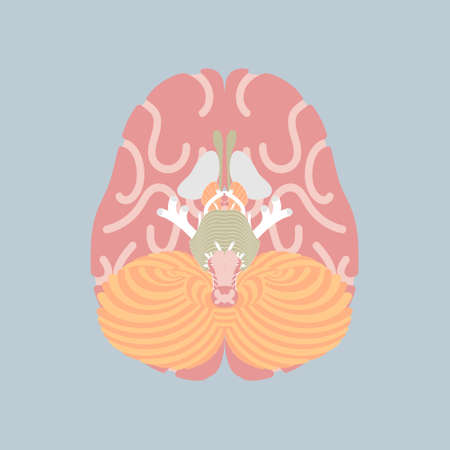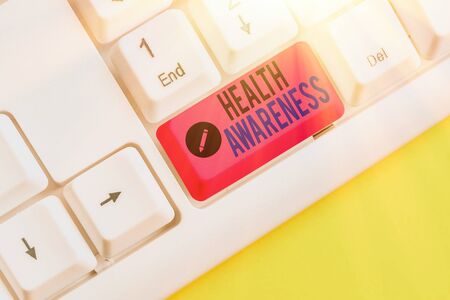Understanding Headaches and Migraines
Headaches and migraines are a common reality for millions of Americans, affecting people from all walks of life. While a headache might be described as a general pain or pressure in the head, migraines often take things up a notch—bringing with them intense throbbing, nausea, sensitivity to light or sound, and sometimes even visual disturbances called “auras.” In the fast-paced American lifestyle, triggers for these conditions can be everywhere: stress at work, lack of sleep, dehydration from those endless cups of coffee, skipping meals between meetings, or even drastic weather changes. For many, these headaches aren’t just an occasional inconvenience—they can disrupt everything from productivity at work to precious family time or social plans. Understanding what sets off your headaches or migraines is the first step toward managing them effectively. In this article, we’ll explore how acupressure—a natural and accessible technique—can offer relief and empower you to take control of your well-being.
2. What is Acupressure?
Acupressure is an ancient healing technique rooted in Traditional Chinese Medicine (TCM), which has found a modern following in American holistic health culture. At its core, acupressure involves applying gentle but firm pressure to specific points on the body, known as acupoints, to stimulate the body’s natural healing abilities. Unlike acupuncture, which uses needles, acupressure relies solely on the hands, making it accessible and non-invasive—qualities that resonate with many Americans seeking natural remedies for headaches and migraines.
In the United States, acupressure has evolved from an alternative therapy to a mainstream wellness practice. Many people incorporate it into daily self-care routines or seek out professional practitioners as part of their integrative health plans. The appeal lies in its simplicity and holistic approach: instead of merely masking pain with medication, acupressure aims to address underlying imbalances in the body’s energy flow, referred to as “qi” (pronounced “chee”).
The table below summarizes key aspects of acupressure and how it compares to other headache relief methods commonly used in America:
| Method | How It Works | Main Benefit | Common Use in U.S. |
|---|---|---|---|
| Acupressure | Pressure on specific body points stimulates energy flow | Natural pain relief without drugs | Self-care & professional sessions |
| Pain Medication | Chemically blocks pain signals in the brain | Quick symptom relief | Over-the-counter & prescription use |
| Massage Therapy | Manipulates muscles and tissues to reduce tension | Relaxes body and mind | Spa treatments & physical therapy |
| Aromatherapy | Essential oils inhaled or applied topically for relaxation | Mood improvement & mild pain reduction | Home use & wellness centers |
This integration of acupressure into American wellness reflects a broader cultural shift toward preventative care and empowering individuals to take charge of their own health journeys. Whether used alone or alongside conventional medicine, acupressure offers a gentle, effective way to manage headaches and migraines naturally.

3. Key Acupressure Points for Relief
When it comes to easing headaches and migraines with acupressure, knowing where to press is half the battle. Here are some of the most effective points that you can use at home or even at your desk when pain strikes. All you need are your own fingers and a few quiet minutes.
LI-4 (Hegu) – The “Headache Go-To”
This point is located in the webbing between your thumb and index finger. To find it, bring your thumb and index finger together; the highest point of the muscle bulge is LI-4. Use your opposite thumb to firmly press on this spot, holding for 30 seconds to a minute, then switch hands. Many people report quick relief from tension headaches and migraines using this simple technique.
How to Do It Safely:
Don’t use this point if you’re pregnant, as it may induce labor. Always apply steady, comfortable pressure—never so hard that it hurts.
Yintang – The “Third Eye” Point
Sitting right between your eyebrows, Yintang is often called the third eye point. This spot helps soothe stress, eye strain, and frontal headaches. Simply press gently with your index or middle finger for about one minute while breathing slowly.
Quick Tip:
If you feel dizziness or discomfort, stop immediately. Gentle circular motions can also help enhance relaxation here.
GB-20 (Fengchi) – At the Base of Your Skull
To locate this spot, place both thumbs at the base of your skull, in the hollows just outside the thick neck muscles. Apply upward pressure toward your head for 1-2 minutes. GB-20 is especially good for migraines and tension headaches that start at the back of your head or neck.
Safety Reminder:
Avoid pressing too hard; these areas are sensitive. If you have neck injuries or medical conditions, check with your doctor first.
Extra Tips for Best Results
For all acupressure points, remember: Relax your body and breathe deeply while applying pressure. Hydrate afterward to support your body’s natural healing processes. And if you ever feel sharp pain, numbness, or worsening symptoms, stop immediately and consult a healthcare provider.
4. Step-by-Step: How to Use Acupressure
If you’re new to acupressure, don’t worry—getting started is simple and doesn’t require any fancy equipment. Here’s a straightforward, step-by-step guide to help you use acupressure at home, using techniques that are safe and easy for most people. All you need is a quiet spot, clean hands, and a few minutes of your time.
Getting Ready
- Find a comfortable seat: Sit on your couch, bed, or even at your kitchen table—whatever feels relaxing.
- Wash your hands: Since youll be touching your face and neck, it’s best to have clean hands.
- Take a few deep breaths: Inhale through your nose and exhale slowly to help settle your mind and body.
Common Acupressure Points for Headaches & Migraines
| Acupressure Point | Location | How to Apply Pressure |
|---|---|---|
| LI-4 (Hegu) | The fleshy area between your thumb and index finger | Squeeze firmly with the opposite thumb and index finger; hold for 30 seconds to 1 minute, then switch hands |
| Yintang (“Third Eye”) | Midpoint between your eyebrows | Use your index or middle finger to gently press in a circular motion for up to 1 minute |
| GB-20 (Feng Chi) | The base of your skull, in the hollows on both sides of the neck muscles | Place your thumbs in the hollows and gently massage upward for 1-2 minutes while tilting your head back slightly |
Step-by-Step Instructions
- Select a pressure point from the table above based on where you feel tension.
- Use gentle but firm pressure. Start light—you should feel relief, not pain. If it hurts, ease up.
- Breathe deeply as you press or massage each point.
- Spend about 30 seconds to 2 minutes on each point.
- If possible, repeat the process two or three times daily during headache episodes.
Pro Tips for Success
- If you’re sitting at your work desk or stuck in traffic (not driving!), these techniques can still be done discreetly—perfect for modern American life.
- You can try applying a warm compress after acupressure for extra relaxation.
- If you’re unsure about which points work best for you, experiment with all three listed above and notice which brings the most relief.
This step-by-step approach makes acupressure accessible—even if you’ve never tried anything like it before. Remember: It’s about being gentle with yourself and listening to what feels right as you go.
5. When to Seek Professional Help
While acupressure can be an effective, drug-free way to manage headaches and migraines, it’s essential to recognize when your symptoms require more than just at-home care. In the American healthcare landscape, self-care is valued, but so is knowing when to reach out for expert guidance. If your headaches become unusually severe, occur more frequently, or are accompanied by warning signs like vision changes, numbness, slurred speech, fever, or sudden onset after a head injury, it’s time to consult a healthcare provider. These could signal underlying conditions that need medical attention.
Integrating acupressure with conventional care can be a natural experiment in personal wellness. Many Americans find success using acupressure alongside prescribed medications or therapies recommended by their doctors. Open communication is key—let your physician know about all complementary methods you’re trying. This helps ensure that nothing interferes with your treatment plan and that any new symptoms are properly evaluated.
Ultimately, while DIY approaches offer empowerment and comfort, they work best as part of a holistic strategy guided by professional insight. Trust your instincts: if something doesn’t feel right or if the pain disrupts your daily life, seeking help is not only wise—it’s essential for your overall well-being.
6. Personal Stories and Everyday Experiences
Acupressure isn’t just a theory floating around in wellness blogs—it’s a hands-on approach that many Americans have woven into their daily routines. We reached out to folks from different backgrounds and asked them to share their honest experiences with using acupressure for headaches and migraines. Here are some of their stories, surprises, and takeaways:
Unexpected Relief: Emma’s Story from Portland
“I used to pop ibuprofen the moment I felt a headache coming on,” Emma, a busy graphic designer, recalls. “But after a friend suggested trying acupressure on the webbing between my thumb and index finger (LI4 point), I gave it a shot during a stressful work deadline. To my surprise, the tension eased up within minutes—enough that I could finish my project without meds.” Emma now uses acupressure as her first line of defense, especially when she’s at her desk or traveling.
Migraine Management: Jake’s Experiment in Austin
Jake, an avid runner and migraine sufferer, describes his experience as “part experiment, part necessity.” He started applying pressure to the Yintang point between his eyebrows whenever he felt a migraine aura coming on. “It doesn’t replace my prescription meds entirely,” he says, “but it helps me manage milder episodes and sometimes shortens the duration.” Jake’s biggest lesson? Consistency matters—regular practice makes the technique more effective over time.
The Role of Skepticism: Lisa’s Hesitation in Chicago
Lisa was skeptical about anything that wasn’t strictly medical. But after reading up on self-care during the pandemic, she tried gentle acupressure while waiting for her doctor’s appointment. “Even if it didn’t ‘cure’ my headaches, it helped me feel less helpless,” she shares. Lisa now recommends it as a complementary tool—something you can do for yourself when you’re in between appointments or waiting for medication to kick in.
Lessons Learned Across the Board
If there’s one thread connecting these stories, it’s that acupressure is about empowerment. Whether you find instant relief or just a moment of calm, taking action with your own hands brings comfort. Americans who’ve tried these techniques agree: It’s not magic, but it can be a meaningful part of your headache toolkit. Always listen to your body—and don’t hesitate to reach out to healthcare professionals if headaches persist.


